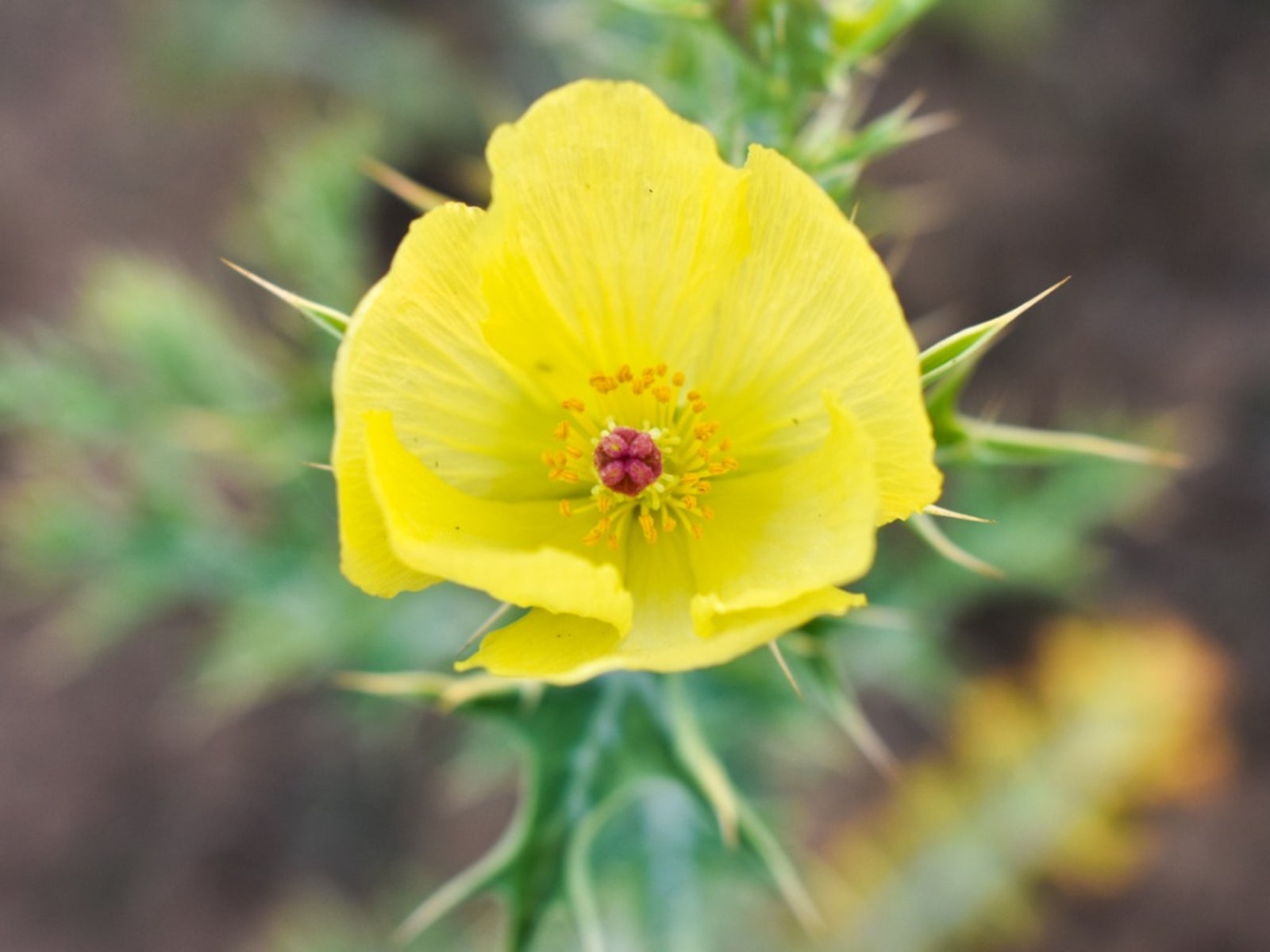Prickly Poppy Plant Info – Mexican Prickly Poppy Uses And Care In Gardens


Botanists aren’t sure where Mexican prickly poppy originated, although many think the prickly poppy plant is native to the southeastern United States, Mexico, tropical South America, and the Caribbean. Regardless of its beginnings, the plant has naturalized across the eastern half of the United States.
You may know prickly poppy plant (Argemone Mexicana) as yellow prickly poppy, flowering thistle, crested prickly poppy, or argemone. It is perennial in USDA plant hardiness zones 8 through 11. In cooler climates it is grown as an annual.
Mexican Prickly Poppy Uses
Growing Mexican prickly poppies is easy, and prickly poppy flowers are pretty, but keep in mind that the plant is extremely prickly and may not be a good choice for places where children play. It may not work well along sidewalks, driveways, and walking paths.
Prickly Poppy Flowers: Important Considerations
Toxicity: All parts of Mexican prickly poppy are toxic if ingested, especially the seeds. The plant’s level of toxicity depends on several factors, including the weight, age, size, and physical condition of the person. Children are most susceptible. Toxicity also depends on the season and the plant’s stage of growth. It is also toxic to livestock, but they rarely bother this formidable plant. Deer also tend to give prickly poppy plants a wide berth.
Invasiveness: Prickly poppy is considered an invasive species in some areas. Consider the plant’s aggressive nature before planting prickly poppy flowers in your garden. Check with your local extension office or Department of Fish and Wildlife for specifics.
Growing Mexican Prickly Poppies
Mexican prickly poppy is best started by planting seeds directly in the garden, just before the last frost in spring. You can also start seeds indoors five to six weeks before the last average frost in spring. The plant doesn’t like its roots to be disturbed, so planting seeds in peat pots is likely to be more successful.
Prickly poppy flowers need full sunlight. The plant thrives in poor sandy or rocky soil but adapts to nearly any well-drained soil. Keep the plants moist until the roots are established; thereafter, it is drought-tolerant and requires moisture only during hot, dry weather.
Sign up for the Gardening Know How newsletter today and receive a free copy of our e-book "How to Grow Delicious Tomatoes".
Prickly poppy plants are pest resistant but may be bothered by diseases such as downy mildew, root rot, or anthracnose especially in overly wet conditions. Deadhead regularly to keep the plant neat and to discourage rampant self-seeding.

A Credentialed Garden Writer, Mary H. Dyer was with Gardening Know How in the very beginning, publishing articles as early as 2007.